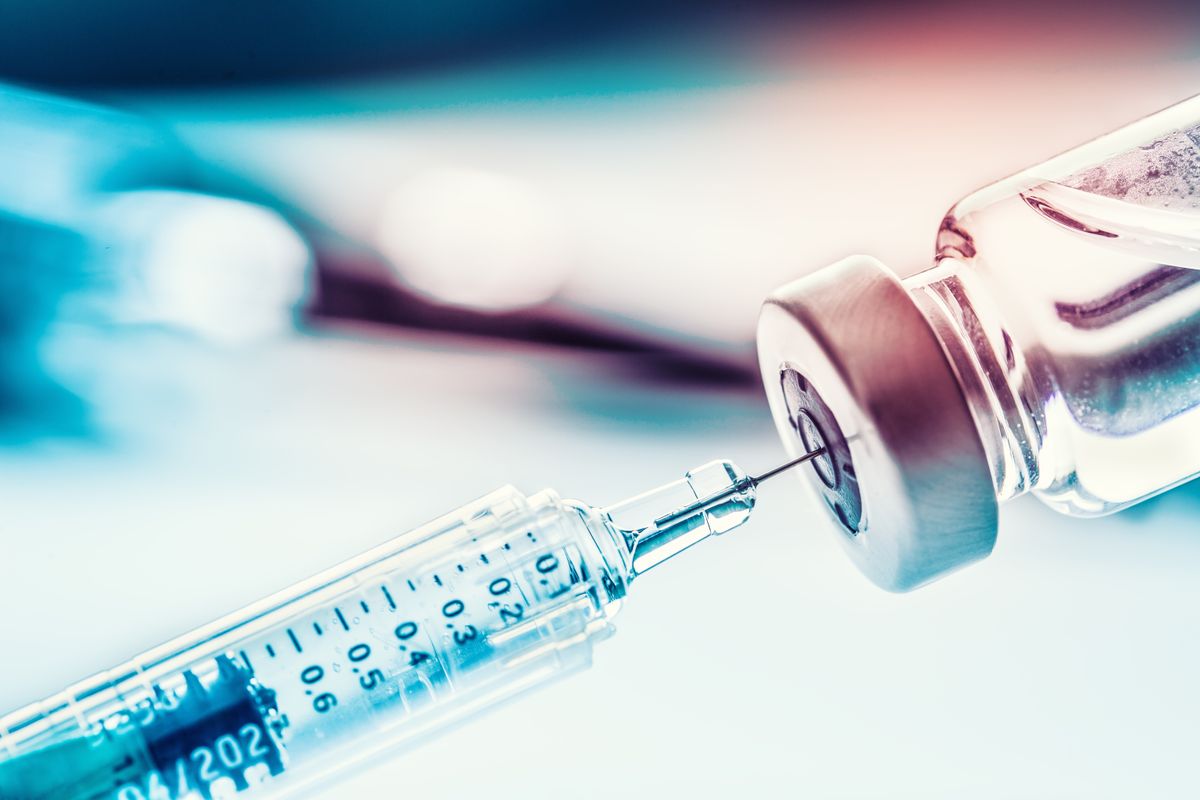This month, we look at the following questions:
What is the effect of a PRP (Platelet Rich Plasma) injection on:
1) tendinopathies,
2) osteoarthritis,
3) muscle lesions,
4) sprains?
What is it all about ?
PRP (platelet-rich plasma) injection is a procedure in which blood is taken from a patient, centrifuged to extract the platelet-rich plasma, and then injected back into the area to be treated. The platelets then release growth factors to stimulate the regeneration of damaged tissue.
1) What is the effect of a PRP injection on tendinopathies?
The studies, results and level of scientific evidence for the effects of PRP injection on tendinopathies are shown in the table below.
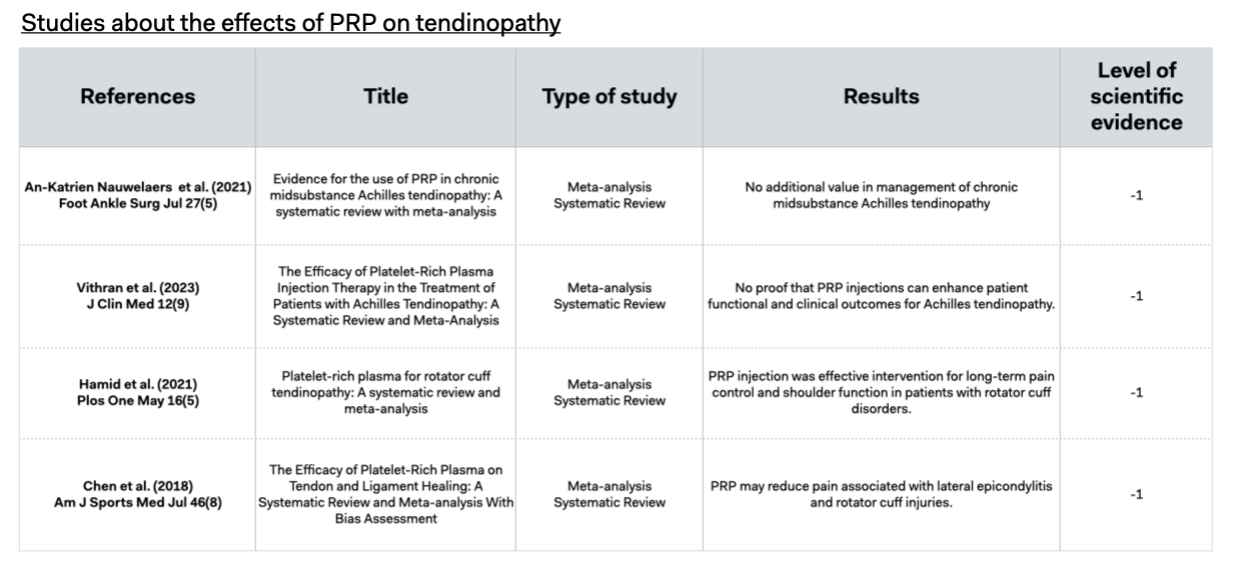
What are the results ?
There is no effect of PRP on patients with Achilles tendinopathy. There is a beneficial effect of PRP on pain in lateral epicondylitis and rotator cuff pathology
What is the level of scientific evidence of PRP on tendinopathy?
1-: Meta-analyses, systematic reviews or randomised controlled trials, or randomised controlled trials with a high risk of bias
Conclusion : The results of the scientific literature do not justify the injection of PRP for Achilles tendinopathies. On the other hand, this technique is justified for the treatment of pain in lateral epicondylitis and rotator cuff pathology.
What is the protocol(s) used for rotator cuff disorders?
- Duration of the intervention: from 6 months to 12 months.
- Quantity of PRP injected: from 3ml to 10ml.
- Number of injections: from 1 injection to 4 injections over the intervention period.
2) What is the effect of a PRP injection on osteoarthritis?
The studies, results and level of scientific evidence for the effects of PRP injection on osteoarthritis are shown in the table below.
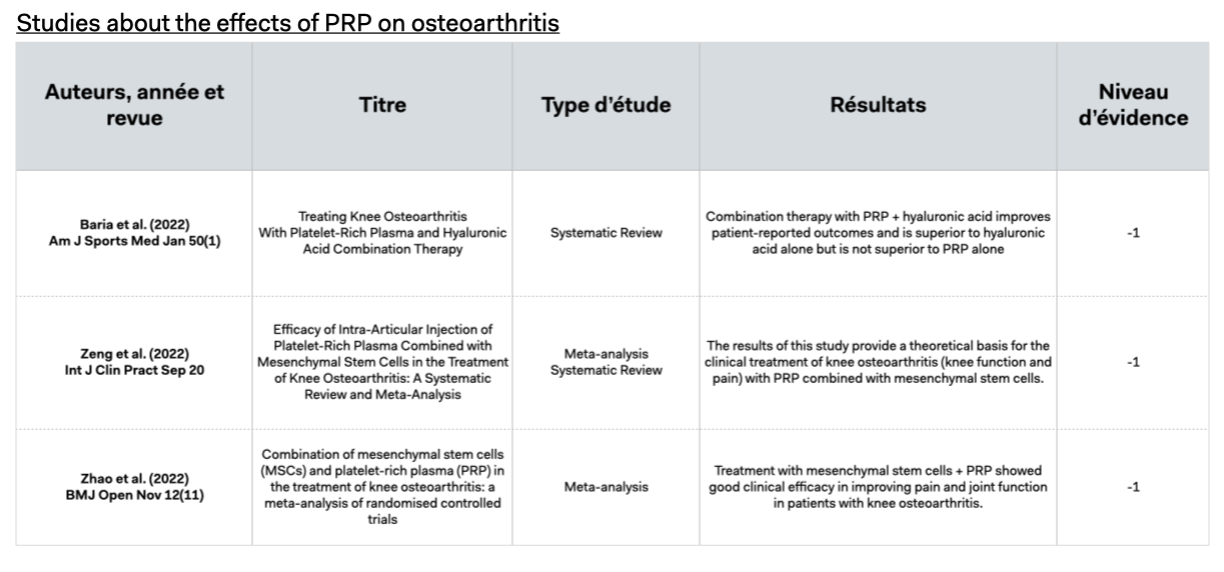
What are the results?
There is a beneficial effect of PRP, but in combination with other modalities (mesenchymal stem cells and hyaluronic acid) on knee pain.
What is the level of scientific evidence of PRP on osteoarthritis?
1-: Meta-analyses, systematic reviews or randomised controlled trials, or randomised controlled trials with a high risk of bias.
Conclusion : The results of the scientific literature do not justify the single injection of PRP for the treatment of osteoarthritis. On the other hand, this technique can be justified when administered with other substances: mesenchymal stem cells and hyaluronic acid.
What is the protocol(s) used for knee osteoarthritis?
- Duration of the intervention: from 6 months to 12 months.
- Quantity of PRP injected: from 2ml to 4ml.
- Number of injections: from 1 injection to 3 injections over the intervention period.
3) What is the effect of a PRP injection on muscle injuries?
The studies, results and level of scientific evidence for the effects of PRP injection on muscle injuries are presented in the table below.
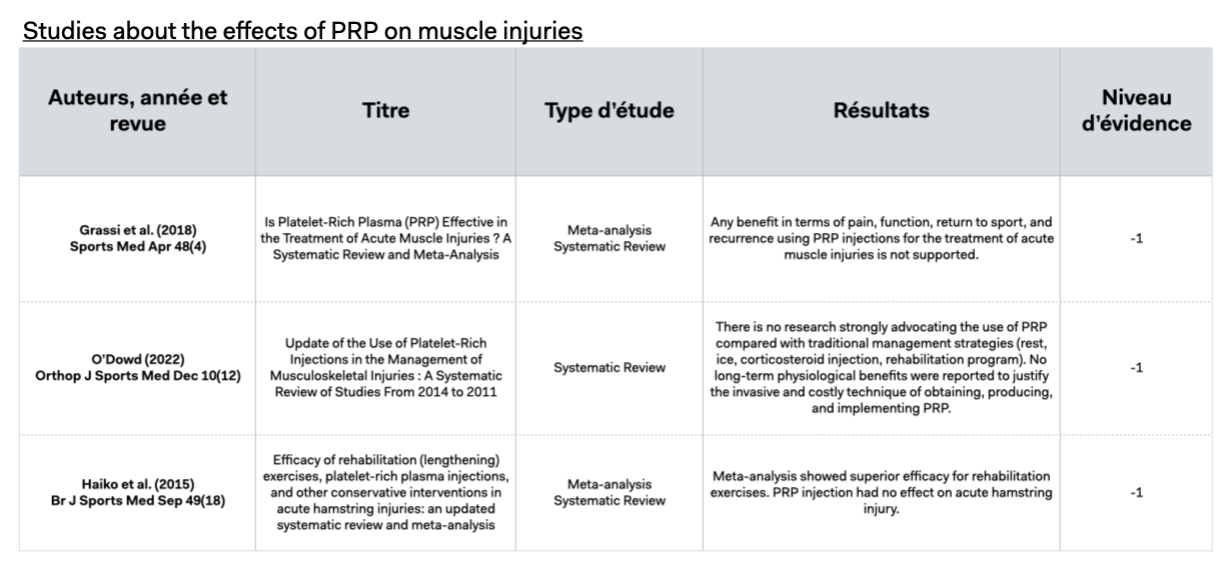
What are the results?
There is no beneficial effect of PRP injection on muscle injury.
What is the level of scientific evidence of PRP injection on muscle injury?
1-: Meta-analyses, systematic reviews or randomised controlled trials, or randomised controlled trials with a high risk of bias.
Conclusion : The results of the scientific literature do not justify the injection of PRP to treat muscle injuries.
4) What are the effects of a PRP injection on anterior crucial ligament injuries?
The studies, the results and level of scientific evidence of the effect of PRP injection on anterior crucial ligament injuries are shown in the table below.
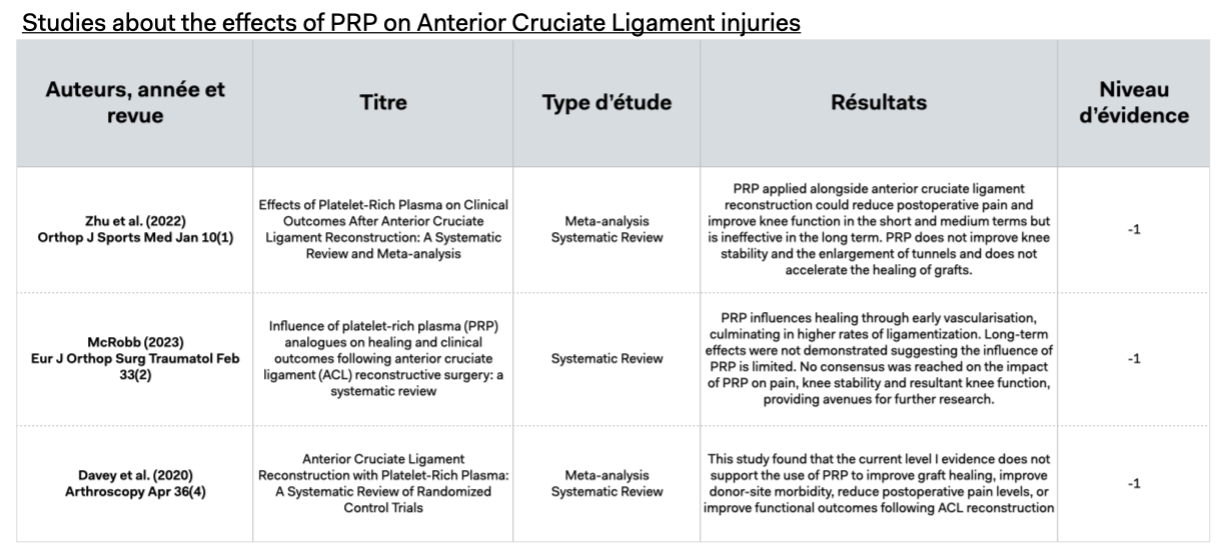
What are the results?
There is no beneficial effect of PRP on anterior crucial ligament injuries.
What is the level of scientific evidence of PRP on anterior crucial ligament injuries?
1-: Meta-analyses, systematic reviews or randomised controlled trials, or randomised controlled trials with a high risk of bias.
Conclusion : Based on the results of the scientific literature, there is no justification for injecting PRP to treat ligament injuries.


